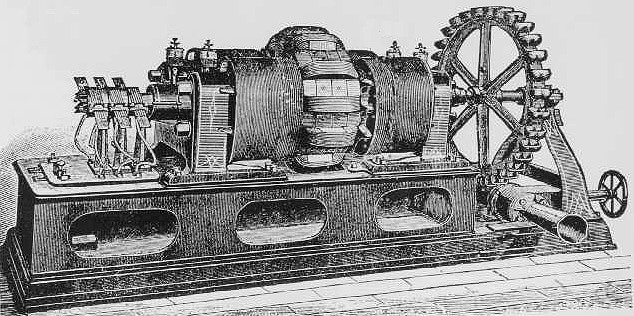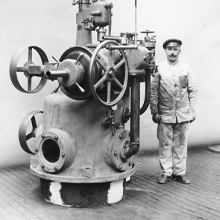Humans have been harnessing water to
perform work for
thousands of years. The Greeks used water wheels for
grinding wheat into flour
more than 2,000 years ago. Besides grinding flour, the
power of the water was
used to saw wood and power textile mills and manufacturing
plants. For more than a century, the technology
for using falling
water to create hydroelectricity has existed. The
evolution of the modern
hydropower turbine began in the mid-1700s when a French
hydraulic and military
engineer, Bernard Forest de Bélidor wrote Architecture
Hydraulique. In this
four volume work, he described using a vertical-axis
versus a horizontal-axis
machine. During the 1700s and 1800s, water
turbine development
continued. In 1880, a brush arc light dynamo driven by a
water turbine was used
to provide theatre and storefront lighting in Grand
Rapids, Michigan; and in
1881, a brush dynamo connected to a turbine in a flour
mill provided street
lighting at Niagara Falls, New York. These two projects
used direct-current
technology. Alternating current is used today. That
breakthrough came
when the electric generator was coupled to the turbine,
which resulted in the
world's, and the United States', first hydroelectric plant
located in Appleton,
Wisconsin, in 1882.
Image by:
http://energy.gov/eere/water/history-hydropower

| Image by:
http://americanhistory.si.edu/powering/images/gallery.htm |
The history of water turbines goes
back quite a long ways. The famous Swiss mathematician
Leonard Euler and his
son experimented with reaction wheels. In 1826
Jean-Victor Poncelet of
France developed some ideas on an inward-flowing radial
turbine. He never
entered the stage but his ideas were a big step towards the
modern water
turbine. In 1838 the largest contribution to water turbines
came. James B
Francis added stationary guide vanes and shaped the blades
so that water could
enter shock-free at the correct angle. Today this turbine
design is still the
most popular. Lester Allan Pelton developed a very efficient
water turbine in
the 1870’s that extracted most of the waters kinetic energy[7].

Over
the years many extraordinary
men developed new designs for water turbines. In 1882 in
Appleton, Wisconsin a
hydroelectric central station was built. This station
produced 12.5 kilowatts
and was used to light two paper mills and a house. The
success of the Appleton
hydroelectric station sparked a spread of water turbine
technology. The
technology though wasn’t able to produce more that a few
hundred kilowatts of
power until the 1930’s. When the Hoover Dam opened in 1936
it operated using 17
Francis turbines capable of delivering from 40,000 to
130,000 kilowatts of
power, along with two 3,000-kilowatt Pelton wheels[7].